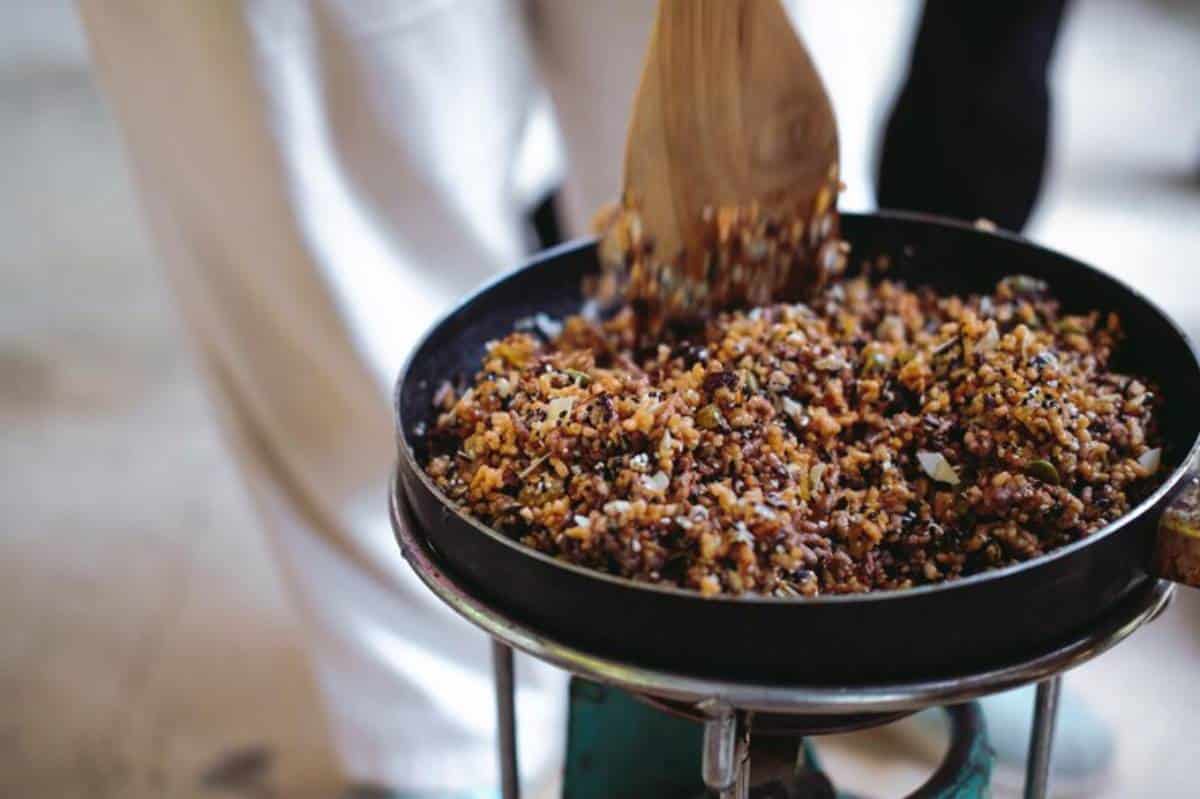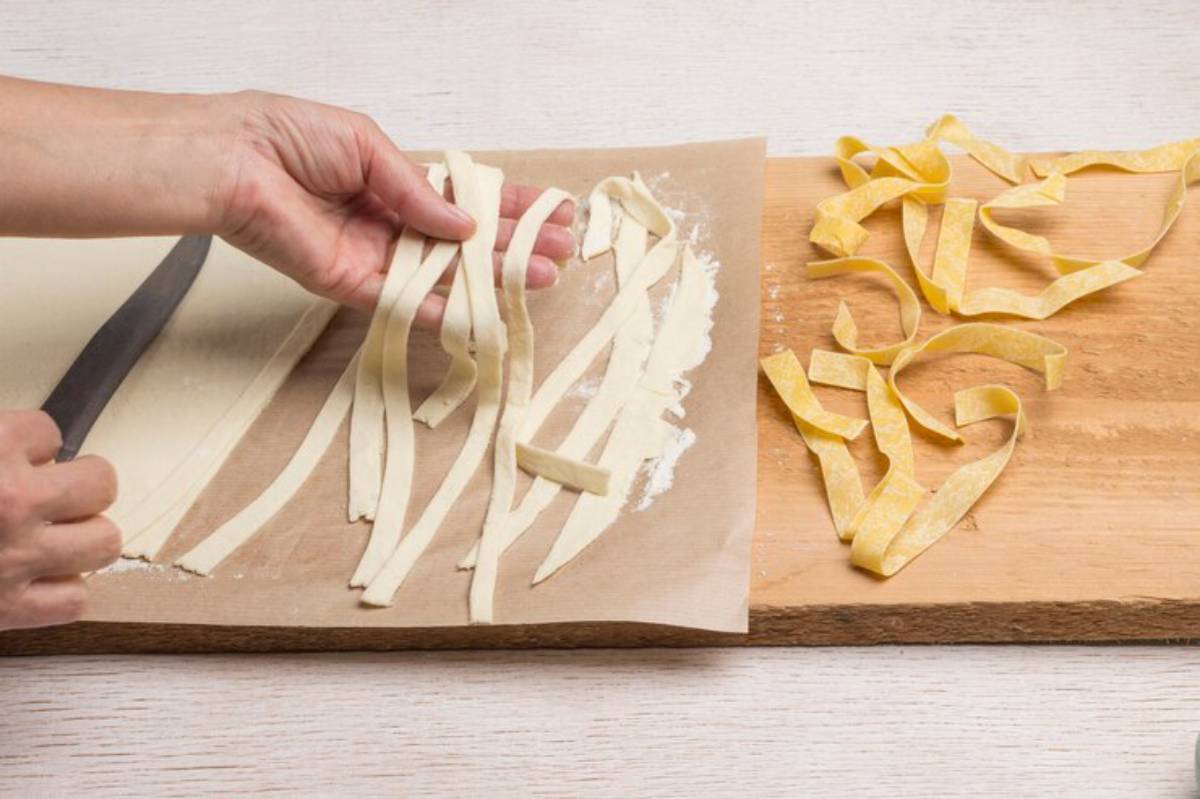
How to Make Hand-Rolled Tagliatelle
The Joy of Rolling Pasta by Hand
There’s something deeply grounding about making pasta from scratch. It’s a tactile, meditative process that ties you to centuries of Italian culinary tradition — and a world away from packaged noodles. If you’ve ever wanted to elevate a simple pasta dish into a gourmet experience, learning how to make hand-rolled tagliatelle is the perfect place to start.
Unlike machine-rolled pasta, hand-rolled tagliatelle carries the subtle textures of your touch — slightly uneven edges, a varied bite, and a silkiness that clings beautifully to sauce. It’s not just food. It’s a story in every strand.
In this guide, we’ll explore why hand-rolling pasta is worth your time, what ingredients and techniques make it shine, and how to turn this timeless method into a signature element of your home cooking. Whether you’re chasing Sunday-night comfort or planning a romantic dinner, fresh pasta made by hand is the kind of kitchen ritual that nourishes more than your appetite.
Why Choose Hand-Rolled Over Machine-Made?
A Different Texture, a Better Bite
Hand-rolled tagliatelle tends to be ever-so-slightly thicker and less uniform than machine-rolled pasta. This gives it a rustic texture that captures sauce in its subtle grooves, particularly ideal for heartier pairings like ragù or porcini cream.
It’s not about perfection. It’s about personality.
Slower, Simpler, and More Mindful
There’s a rhythm to rolling pasta by hand. You don’t need a machine humming or a feed to keep up with. Just a rolling pin, a board, and a bit of time. Many cooks describe it as relaxing — a way to feel the dough and stay fully present.
For beginner pasta-makers, hand-rolling also builds better instincts. You learn what “elastic but not sticky” truly feels like. Over time, this skill becomes second nature.
The Ideal Dough for Hand-Rolled Tagliatelle
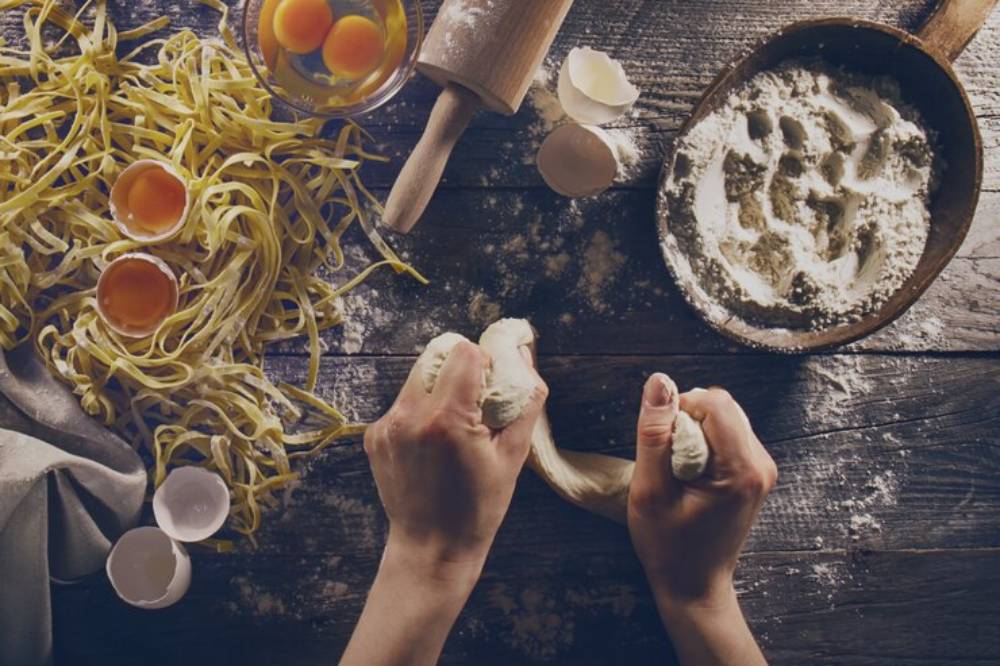
Flour Matters
In traditional Italian kitchens, the preferred flour is Tipo 00 — an ultra-fine, soft wheat flour that makes for a silky, supple dough.
But if you’re after something heartier or more gourmet, you can blend in:
- Semolina flour: Adds chew and a bit of golden colour
- Whole wheat flour: Earthier flavour, slightly denser bite
- Chestnut flour: A nutty, slightly sweet twist (use sparingly)
Creating variations of your base pasta dough by incorporating flours like chestnut or buckwheat opens up entirely new taste profiles — a trick many seasoned home cooks learn after nailing the classic.
If you’re already exploring alternative flour choices, you may enjoy making pasta with exotic flours for gourmet variations — including tips for getting the right balance of texture and elasticity.
Eggs, Water, and Fat
The classic ratio: 100g flour to 1 whole egg per person. For added richness or elasticity.
Some add:
- 1 teaspoon olive oil (optional)
- A splash of water if the dough feels dry
- Extra yolks for a silkier, richer dough
The dough should be soft but not sticky — able to bounce back slightly when pressed. Knead for about 8–10 minutes and rest it under a bowl or in clingfilm for at least 30 minutes before rolling.
Rolling and Cutting: The Handmade Method
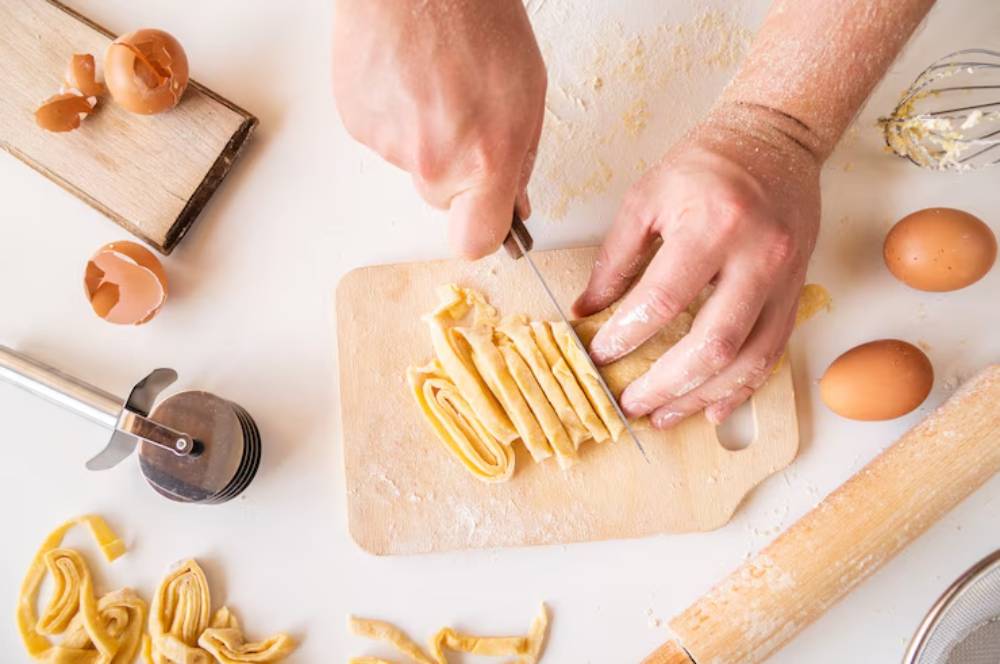
While we’re not going into a detailed step-by-step.
Here’s what to expect when hand-rolling your pasta:
- Rolling pin control is everything. Start from the centre and rotate frequently for even thinness.
- The ideal thickness? About 1mm. You should be able to just see your hand through the sheet.
- Once rolled, dust lightly with flour, fold like a letter, and slice strips about 6–8mm wide for tagliatelle.
- Unfurl gently and dust again to prevent sticking.
The irregularities? Embrace them. That’s what makes it yours.
Pairing Sauces and Flavours with Tagliatelle
Handmade tagliatelle deserves sauces that complement — not overpower — its tender but resilient strands.
Classic Pairings
- Tagliatelle al Ragù: Traditional Bolognese-style meat sauce
- Porcini and thyme cream: Earthy and aromatic
- Butter, sage, and Parmigiano: Simple but elegant
- Seafood saffron sauce: A luxurious coastal take
Experimental Ideas
- Lemon zest, ricotta, and charred courgette ribbons
- Smoked aubergine puree with pine nuts and chilli oil
- Infused dough with beetroot or spinach for colour contrast
Want to learn how to infuse even more creativity into your pasta base? Discover tips on making flavour-infused pasta dough that gives your dish a visual and aromatic edge before the sauce even hits the pan.
Storing and Serving Homemade Tagliatelle
Short-Term Storage
- If cooking within a few hours: lightly flour, nest the strands, and cover with a clean cloth.
- To refrigerate: Place on a floured tray, wrap with clingfilm, and use within 24 hours.
Freezing
- Let the strands dry slightly, form into nests, freeze on a tray, then store in a sealed container or bag.
- Cook from frozen in boiling salted water — just add 1–2 minutes to the cooking time.
Cooking Time
- Fresh tagliatelle typically cooks in 2–3 minutes — watch for it to float and taste for texture.
Serve immediately with sauce warmed and ready. Timing is key — you want the pasta hot and sauced, not sitting around.
Real Kitchen Stories: Pasta from Hands, Not Machines
“Rolling tagliatelle with my grandmother was never about efficiency. It was about feeling the dough, talking about life, and eating the results like it was the best thing in the world.” — Laura, Nottingham
“I used to buy fresh pasta from the shop until I tried making it by hand. It sounds dramatic, but it changed how I cook. I use fewer ingredients now — but they matter more.” — Michael, London
“I started hand-rolling pasta during lockdown. Now it’s a weekend ritual. I’ll try new flours, play with herbs, or even roll chocolate pasta for dessert.” — Samira, Leeds
Making tagliatelle by hand isn’t just about eating better. It’s about cooking with care.
Why Fresh, Hand-Rolled Pasta Elevates Your Cooking
There’s a reason fine dining chefs and home cooks alike swear by fresh pasta. It’s not just about control or flavour — it’s about intention.
- You learn the texture of the dough
- You appreciate timing and freshness
- You connect to your food in a deeper way
- You impress guests without needing lavish ingredients
Fresh pasta doesn’t need much. A handful of cherry tomatoes, a drizzle of olive oil, and some torn basil over hand-rolled tagliatelle? That’s summer in a bowl.
Kitchen Tools to Support (But Not Replace) the Process
While hand-rolling requires little more than a board and rolling pin.
Here are some helpful extras:
- Bench scraper – Great for handling sticky dough or cleaning your work surface
- Pastry cutter or pizza wheel – Handy for slicing neat strands
- Fine mesh sieve – To dust with semolina and prevent clumping
- Digital scale – Precision matters in pasta dough ratios
Optional upgrades: wooden pasta boards, drying racks, and even marble surfaces for cooler rolling.
But remember, the star of this show is your hands.
Conclusion: The Pasta Is in Your Hands
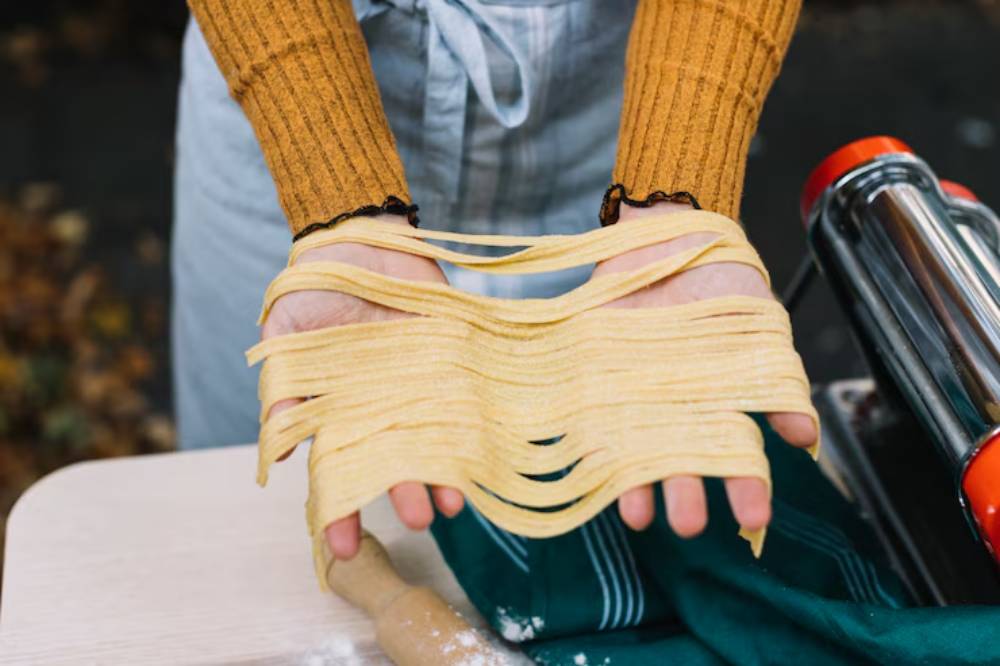
Learning how to make homemade tagliatelle by hand isn’t just a culinary skill — it’s a return to mindful cooking. You slow down. You connect. And in the end, you create a dish that’s truly yours, from flour to fork.
It’s not about speed or uniformity. It’s about touch, texture, and the kind of flavour that only comes from something you made with care.
So roll out your dough, dust your bench, and slice into something real. Fresh pasta isn’t just better — it’s personal.


